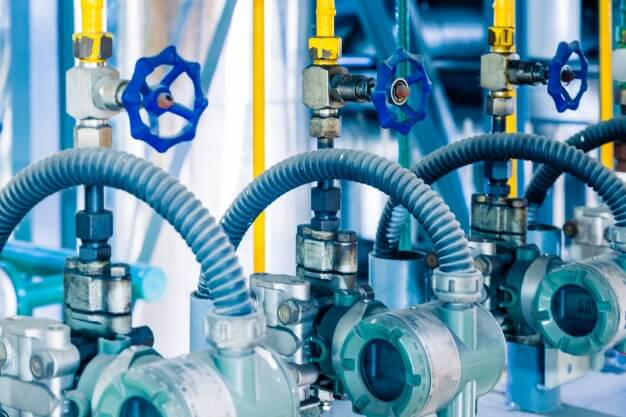How Does a Submersible Vertical Turbine Pump Function?
Turbine pumps perform a vital function in many industries, including construction, mining, and cool water circulation. According to Mindat.org, a turbine pump is “a pump with a shrouded impeller and receiving the water at its center. A diffusion ring containing vanes surrounds the impeller and directs the impeller discharge into a circular casing, which delivers into the eye of the next impeller in series. The diffusion ring converts the high-velocity discharge of the impeller into pressure head.” However, not all turbine pumps are the same. When it comes to turbine pumps, there are essentially two main types: submersible vertical turbine pumps and lineshaft vertical pumps. Each performs a similar function but acts differently and has its advantages and disadvantages, depending on the application. To get the right type of turbine pump for your situation, it’s important to understand how the two types of pumps function and what they have to offer.
How a Submersible Vertical Turbine Pump Functions

Submersible turbine pumps are designed to function while submerged in water. According to WaterWorld.com, “Submersible motor vertical turbine pumps use a submersible motor coupled to the lower portion of a submerged vertical turbine pump so that both are located together in the well.”
Here’s how the entire process works: First, water enters into the pump through the bottom. This portion of the pump is bell-shaped and called the “Suction Bell.” After that, the water is sent to the first stage impeller, which raises the water’s velocity. From there, the water continues onto the diffuser bowl, which is located directly above the impeller. The energy created from the higher velocity is here converted into high pressure. Simultaneously, the diffuser bowl is directing the water to the next impeller, which is located above the bowl.
After leaving the last diffuser bowl, the final stage is for the water to travel up through a long vertical pipe. At the surface is a discharge head, which changes the direction of the flow. A motor is mounted to the discharge head, pushing the water through its final stage.
This entire process runs continuously as long as there is water at the bottom, completing the journey from top to bottom in just seconds. For deeper wells, multiple impellers may be used to create more pressure along the route.
The biggest difference between a submersible vertical turbine pump and a vertical line shaft turbine is the motor placement. In a submersible turbine pump, the motor and the pump are located at the bottom of the system, submerged underwater. On the other hand, vertical line shaft pumps have the motor running at the top of the system. The motor placement has a big impact on how the turbine functions and on which type of turbine pump is ultimately right for the project at hand.
Benefits of a Submersible Vertical Turbine Pump
A vertical turbine pump submerged underwater provides a few advantages over a line shaft vertical pump. For starters, submersible pumps are typically quieter, which is an advantage if you are running the pump in a major metro area or in any other setting where the noise level is a factor. Besides this, this type of pump is less susceptible to vibration problems. Too much vibration within the system can cause breakdowns and other issues, meaning it is ideal to reduce vibrations as much as possible.
In many cases, working with a submersible vertical turbine pump is more affordable than a line shaft one, since you don’t need to install motor pedestals or line shafting. They can also operate in smaller spaces and at higher speeds, which can further reduce the costs. Finally, a submersible pump does not need a pump house for protection, as the pump is entirely underwater at the bottom of the system.
Benefits of a Line Shaft Vertical Pump

Of course, there are a few advantages to choosing a line shaft vertical turbine pump as well. For example, maintenance on the motors is often easier on line shaft vertical turbine pumps, as the motor is located at the surface rather than at the bottom of a well. In addition, line shaft pumps are often more efficient and less susceptible to failures that result from voltage issues.
Lastly, line shaft pumps are more versatile. You can run a line shaft pump with a vertical motor, a horizontal motor with a right-angle gear drive, a pulley system, and more. More fuel sources are available, as the motor is located above the water and on the surface.
The Right Pump for the Situation
When it comes to picking a turbine pump for a job, there is no one set answer. Each job has its circumstances, including location, budget, and other equipment available. Based on this, project managers must choose the turbine pump that makes the most sense for their project. By understanding how a turbine pump functions and the difference between the types of vertical turbine pumps, project managers can decide the best way to proceed.
How Does a Submersible Vertical Turbine Pump Function? | Zone Industries
